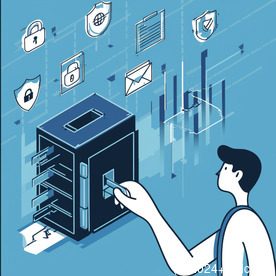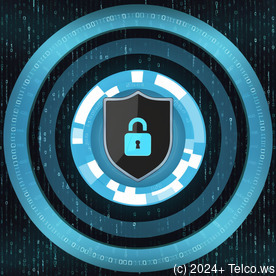- Outstanding Pros ready to help.
- Pay Crypto for Fiat-only Brands.
- Access Top Tools avoiding Sanctions.
- You can buy in total privacy
- We manage all legalities for you.


Secure Communication: Protecting Information in a Digital Age




Introduction to Secure Communication
In our increasingly interconnected world, secure communication has become indispensable for protecting sensitive information transmitted over networks. This encompasses a variety of methods and protocols designed to safeguard communications from unauthorized access, interception, or alteration. Given the prevalence of data breaches and cyber threats, prioritizing the confidentiality, integrity, and authenticity of communications is essential. This article explores the various aspects of secure communication, including its importance, techniques, protocols, and best practices.




Importance of Secure Communication
The significance of secure communication transcends beyond mere technicalities; it is a fundamental requirement for both organizations and individuals. The ability to securely exchange sensitive information—such as personal data, financial transactions, intellectual property, and confidential business communications—cannot be overstated. The repercussions of insecure communications can be detrimental:
- Data Breaches: Unauthorized access to sensitive information can result in identity theft, corporate espionage, and substantial financial losses.
- Loss of Trust: Clients and customers expect their data to be handled securely; any breaches can severely damage reputations and lead to customer attrition.
- Legal Consequences: Many jurisdictions enforce regulations, such as GDPR, that require the protection of personal data, with significant penalties for non-compliance.




Techniques for Secure Communication
Several techniques are employed to enhance the security of communications:
1. Encryption
Encryption is the fundamental technique used to protect information during transmission. It involves converting plaintext into ciphertext through algorithms and keys, allowing only authorized parties with the decryption key to access the original message.
- Symmetric Encryption: This method uses a single key for both encryption and decryption, such as the Advanced Encryption Standard (AES).
- Asymmetric Encryption: Utilizes a key pair (public and private keys) for encryption and decryption, with RSA being a common example.
2. Digital Signatures
Digital signatures provide a means of authentication by allowing senders to sign messages with their private key. Recipients can verify the authenticity of the message using the sender’s public key.
3. Secure Protocols
A variety of protocols are specifically designed to secure communications:
- TLS/SSL: Transport Layer Security (TLS) and its predecessor Secure Sockets Layer (SSL) protect data during transmission over networks, such as the web.
- SSH: Secure Shell (SSH) establishes a secure remote connection over an unsecured network.
- VPN: A Virtual Private Network encrypts internet traffic between a device and a server, adding a layer of security to online activities.
4. Authentication Mechanisms
Ensuring the identity of users who access communication channels is vital:
- Multi-Factor Authentication (MFA): Implement multi-factor authentication to add layers of security beyond just passwords.
- Access Control Lists (ACLs): Define who can access specific resources within a network or system.
5. Firewalls and Intrusion Detection Systems (IDS)
Employ firewalls and IDS to monitor incoming and outgoing traffic for suspicious activities.




Protocols Used in Secure Communication
Several established protocols facilitate secure communication:
- HTTPS: Hypertext Transfer Protocol Secure is an extension of HTTP that uses TLS/SSL to encrypt web traffic, ensuring secure browsing experiences for users.
- S/MIME: Secure/Multipurpose Internet Mail Extensions provides end-to-end encryption for email communications, enhancing privacy.
- PGP: Pretty Good Privacy is a widely used data encryption program that provides cryptographic privacy and authentication for data communication.




Best Practices for Implementing Secure Communication
To effectively implement secure communication strategies, organizations should adhere to the following best practices:
- Regularly update all software and systems to patch vulnerabilities.
- Utilize strong encryption standards; avoid outdated algorithms, such as DES or RC4, which are known to be insecure.
- Educate employees about phishing attacks and social engineering tactics to reduce the risk of human error.
- Conduct regular security audits to identify potential weaknesses in communication channels.
- Develop and implement comprehensive incident response plans to address security breaches promptly.




Conclusion
In conclusion, secure communication is essential in today’s digital landscape, where threats are omnipresent. By employing robust encryption techniques, utilizing established protocols, and implementing strong authentication measures, both individuals and organizations can significantly mitigate the risks associated with insecure communications.
Enhance Your Secure Communication Today!
Interested in enhancing your cybersecurity posture? Our comprehensive secure communication services start at just $741 USD per month! Please proceed to our Checkout Gateway to make the payment of $741. Once you’ve processed the payment, contact us via email, phone, or our website with your payment receipt and details so we can arrange your secure communication service. Thank you for your interest!